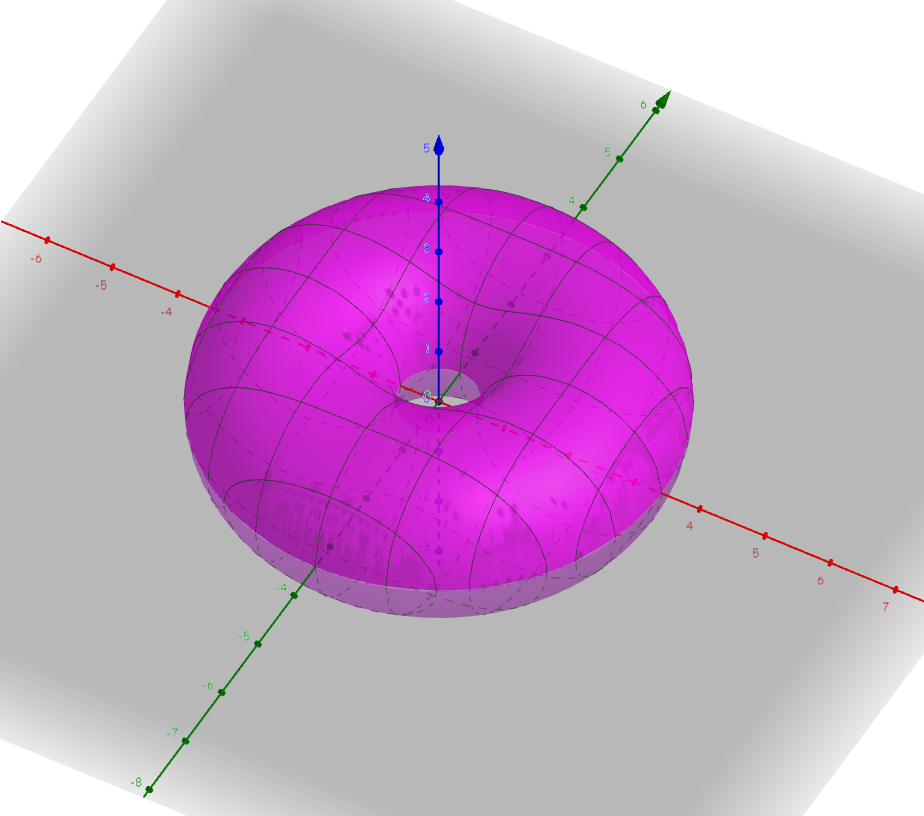Surface Integral
Motivation

KE, CC-BY, "torus".
Have you ever thought to yourself, "I wonder how much powdered sugar I could get on a donut?"
I would assume no but I can get you on the right track.
Vectors
Disclaimer: this page will be a little out there, even for me.
A vector is a combination of a scalar and a direction. Technically, that is. Less formally, we can say that a vector is
the combination of a length and a direction. For example, an arrow pointing up with length 3 is a vector.
There are many ways to notate a vector but for this we will use the standard
Easy enough, right? Right, but now it gets worse.
To find the surface area of a donut (torus) we must realize that a donut is 3-dimensional.
That means that our vectors will be of the form
Operations
Let us notice that
Another property to notice is that
Using
We define the cross product of two vectors to be the determinant of the matrix made up of the basis vectors and the two
other vectors together, that is: for any two vectors,
Surface Integral
Consider that
Finally, consider
In our case,
The formula for surface area is
Using our amazing calculus skills, we can rewrite this as